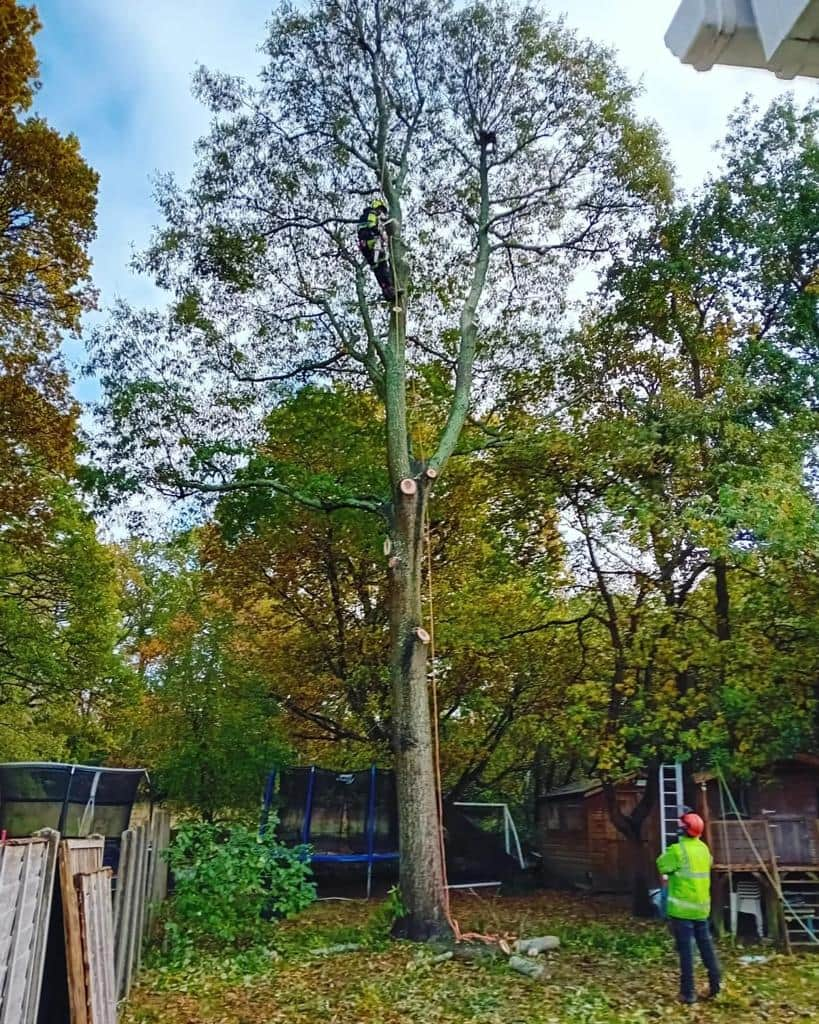Introduction
Tree crown work — whether it’s thinning, lifting, or reducing — plays a crucial role in maintaining the health, shape, and safety of trees. But for many property owners, the question remains: should crown work be carried out as part of a regular maintenance schedule, or only in response to visible issues?
At LM Tree Surgery Selsey, we’ve worked with property owners across Selsey and West Sussex who face this very dilemma. The truth is, while reactive work might seem sufficient in the short term, scheduled crown maintenance often delivers better long-term results for the health of your trees and safety of your outdoor space.
Let’s explore the pros and cons of both approaches — and why a proactive strategy may ultimately be your best bet.
What Is Crown Work?
Crown work refers to a variety of tree surgery techniques that target the crown — the upper part of the tree that includes branches and leaves. This includes:
- Crown thinning: Removing selective branches to reduce density without altering the overall shape.
- Crown reduction: Reducing the height or spread of the crown to make the tree more manageable or safer.
- Crown lifting: Removing lower branches to raise the canopy and increase light or clearance beneath.
Each of these has specific applications, but together, they contribute to a well-balanced, healthy tree that fits harmoniously in its environment.
The Risks of Reactive Crown Work
Relying on a reactive approach — where tree crown work is only carried out once a problem is visible — can lead to several issues. Trees might appear healthy on the surface, but underlying structural problems or excessive growth can develop quietly until they pose a significant hazard.
Risks associated with reactive work:
- Increased likelihood of branch drop or storm damage
- Overgrown canopies interfering with nearby structures or utility lines
- Missed signs of disease or decay in higher limbs
- Needing more aggressive pruning due to neglect
By the time issues are obvious, more intensive — and sometimes irreversible — interventions may be required.
The Advantages of Scheduled Maintenance
Scheduled crown work is based on planned intervals (annually, biennially, or seasonally), depending on the species, location, and growth rate of your trees. This proactive care allows for small, precise adjustments that promote healthier growth and reduce stress to the tree.
Key benefits of scheduled crown work:
- Maintains structural integrity through controlled shaping
- Reduces risk of damage during storms or high winds
- Encourages balanced growth and improved light penetration
- Helps identify early signs of disease, decay, or pest infestation
- Minimises long-term pruning needs
Trees that are regularly maintained tend to be more resilient and aesthetically pleasing — a major benefit for properties in picturesque areas like Selsey.
When Reactive Work May Be Necessary
Of course, there are times when reactive crown work is not only necessary, but urgent. After strong storms, unexpected tree damage, or sudden limb failure, prompt action is essential to ensure safety and prevent further harm.
Common triggers for reactive work:
- Branches breaking or hanging dangerously
- Trees encroaching on buildings or power lines
- Rapid dieback or discolouration in the crown
- Obstruction of driveways, pathways, or views
In these cases, swift action by a qualified team such as LM Tree Surgery Selsey can help mitigate immediate risks and assess whether long-term management is needed.
Striking the Right Balance
The best approach for most property owners is a combination of both strategies. Scheduled crown work should form the backbone of your tree care plan, with reactive services used when unexpected events occur. This ensures trees are kept in their best condition while allowing flexibility for emergencies.
Considerations for a balanced approach:
- Tree species and growth rate
- Age and condition of the tree
- Exposure to wind, salt, or pests in coastal areas like Selsey
- Proximity to buildings, roads, or public spaces
At LM Tree Surgery Selsey, we provide tailored maintenance plans based on individual tree assessments, so you’re never left guessing when the next intervention is due.
Conclusion
While reactive crown work can’t always be avoided, relying solely on it is not advisable for long-term tree health or safety. Scheduled crown maintenance is the more strategic and effective option, allowing your trees to thrive with controlled, expert care — and preventing small problems from turning into large ones.
If you’re in Selsey or West Sussex and have trees that haven’t been professionally assessed in some time, now is the ideal moment to think proactively. LM Tree Surgery Selsey offers expert crown work services that keep your landscape safe, balanced, and looking its best all year round. Let’s take care of your trees before nature forces your hand.
Call us on: 01243 217 387
Click here to find out more about LM Tree Surgery Selsey
Click here to complete our contact form and see how we can help with your tree needs.

